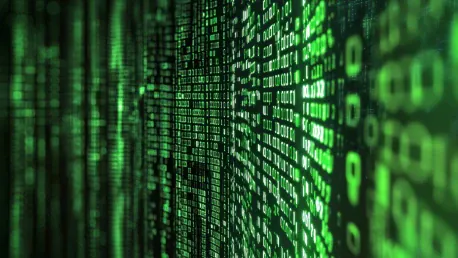The February 2024 ransomware attack on Change Healthcare, a health tech entity owned by UnitedHealth, stands as the most extensive data breach in U.S. history, specifically affecting health and medical data. This cyber onslaught infiltrated the systems of Change Healthcare, impacting the personal and health information of approximately 190 million Americans, which is nearly double the preliminary estimate provided by the company. To fully comprehend the grave implications of this attack, a detailed timeline and analysis of the events following the breach provide pivotal insights into the data breach’s magnitude and consequences.
Initial Signs of Disruption
On February 21, 2024, the first signals of disruption emerged as numerous medical practices and doctors’ offices experienced a sudden stoppage in billing systems and insurance claims processing. These symptoms indicated a severe network interruption attributed to a cybersecurity incident. Swiftly, Change Healthcare initiated its security protocols, resulting in a complete network shutdown in an attempt to isolate the intruders. It was later discerned that unauthorized access into Change Healthcare’s systems began over a week prior, around February 12. This discovery marked the onset of what would become a large-scale investigation and containment effort.
The realization of unauthorized access over a week before the initial signs exposed significant vulnerabilities within Change Healthcare’s security framework. The stoppage in billing systems wreaked havoc across medical practices. Patient care processes were thrown into disarray, as continuity in claims processing and billing operations ceased abruptly. This pervasive disruption necessitated immediate and comprehensive measures by Change Healthcare to mitigate the damage and prevent further unauthorized access.
Identifying the Culprits
By February 29, 2024, an initial misattribution of responsibility to hackers with government or nation-state affiliations was corrected by UnitedHealth, who confirmed that the intrusion was, in fact, executed by a ransomware gang known as ALPHV or BlackCat. ALPHV/BlackCat is a ransomware-as-a-service group with known ties to Russian-speaking operatives. This group operates by affiliates—contractors who infiltrate victim networks with malware devised by ALPHV/BlackCat leaders, with a portion of the ransoms extorted from the victims shared among the gang’s members.
The nature of the breach shifted from a state-sponsored attack to a financially motivated extortion scheme, fundamentally altering the dynamics and subsequent response strategies. Ransomware gangs typically employ a two-pronged strategy known as “double extortion,” wherein they not only encrypt files but also exfiltrate data, threatening to release it publicly if ransom demands are unmet. This revelation prompted a re-evaluation of the threat landscape and the tactical approach of Change Healthcare and UnitedHealth in addressing the crisis.
The Ransom Payment and Its Aftermath
In the days following the confirmation of the breach, UnitedHealth proceeded to negotiate with the attackers. Between March 3 and March 5, 2024, the company paid a ransom of $22 million, hoping to retrieve a “safe” copy of the stolen data and prevent further dissemination. Despite this payment, the ALPHV ransomware group abruptly vanished post-ransom, with their dark web leak site replaced by a fabricated seizure notice claiming intervention by U.S. and U.K. law enforcement. Despite denials from both authorities, signs unmistakably pointed to ALPHV’s exit scam, leaving UnitedHealth without the data they paid to protect.
The loss of the ransom demanded accountability. UnitedHealth’s payments did not secure the data as promised, demonstrating the inherent risks of negotiating with cybercriminals. This debacle sparked a torrent of criticism and underscored the complexity and volatility of handling cyber extortion demands. While the ransom payment was intended to safeguard sensitive data, it inadvertently highlighted the fragile trust and unpredictability in relying on criminal entities to honor agreements.
Widespread Impact on Healthcare Services
Weeks into the cyberattack, the effects reverberated across the U.S. healthcare sector, causing rampant service disruptions. Military health insurance provider TriCare confirmed that “all military pharmacies worldwide” were impacted. The American Medical Association voiced frustration over the lack of detailed communication from UnitedHealth and Change Healthcare regarding the persistent outages. By March 13, Change Healthcare had attained a compromised version of the data, thus commencing the identification of affected individuals.
Military health services offered a stark reflection of the breach’s chaotic aftermath. Global military pharmacy operations were disrupted, reflecting the widespread and unforeseen ramifications of the attack. Authorities criticized the lack of transparency and communication displayed by UnitedHealth and Change Healthcare, adding another layer of complexity to an already intricate issue, highlighting the dire need for better crisis management during such cybersecurity downfalls.
Government Response and Bounty Announcement
The U.S. government, acknowledging the scale and potential consequences of the data breach, escalated its bounty to $10 million for information leading to the capture of key ALPHV/BlackCat leadership and affiliates. This strategic increase, announced by late March, aimed to compel insiders within the gang to betray leadership, thereby mitigating further crises posed by potential data exposure.
Government response to the breach underscored the recognition of its gravity and potential ramifications. Elevating the bounty was designed not just as a corrective measure to counter the immediate threat but also to mitigate future risks posed by the uncontrollable nature of data exposure. This escalation aimed at leveraging financial incentives to internal members of the gang, hoping to dismantle the cybercriminal network from within.
Emergence of RansomHub and Further Threats
A subsequent ransom threat materialized in April 2024 when the affiliate responsible for the assault on Change Healthcare formed a new extortion group named RansomHub. Rightfully embittered, the affiliate leveraged possession of some stolen information to demand additional ransom payments from UnitedHealth. As a proof of threat, RansomHub publicly released a segment of the stolen data, reinforcing their demands and demonstrating the imminent risk of more disclosures.
RansomHub’s emergence symbolized an alarming continuation of the ransomware threat. This affiliate-driven evolution of the attack emphasized the resilience and adaptability of cybercriminals in pressing their demands. The public release of stolen data not only validated their threats but also constituted a breach of trust that jeopardized the integrity of healthcare data security, amplifying the rippling effects of the initial breach.
Public Acknowledgment and Data Breach Extent
By late April, UnitedHealth publicly acknowledged the extent of the breach, estimating it affected a substantial proportion of the U.S. population, with sensitive health data compromised. The affirmation highlighted the breadth of the stolen data, encompassing medical records, diagnoses, medications, test results, and additional personal health information.
The official acknowledgment by UnitedHealth illustrated the magnitude of the data breach. With extensive data compromised, encompassing comprehensive medical and personal records, the announcement resonated as a defining moment in the breach’s narrative. This public disclosure not only propelled the urgency of addressing the breach but also pointed to the systemic vulnerabilities within the healthcare sector that facilitated such unauthorized data access.
Senate Inquiry and Security Lapses
In May, Andrew Witty, UnitedHealth Group’s CEO, faced a Senate inquiry where he admitted fundamental security lapses within Change Healthcare’s infrastructure. A lack of multi-factor authentication on a single user account ultimately enabled the intrusion, underscoring stark cybersecurity failings. Witty conceded that the breach’s impact likely extended to about one-third of the American populace.
Testimonies during the Senate inquiry revealed critical weaknesses within Change Healthcare’s cybersecurity environment. The absence of fundamental security measures, such as multi-factor authentication, unveiled a landscape vulnerable to exploitation. This admission accentuated the importance of stringent security protocols and the necessity for immediate reforms to prevent recurrence of similar data breaches in the future.
Notification Process and Challenges
The process of notifying affected parties began officially on June 20, 2024, adhering to HIPAA requirements. Complicating the notifications was the staggering volume of data involved, compounded by incomplete contact details for numerous individuals. Change Healthcare collaborated with the U.S. Department of Health and Human Services to mitigate the notification burden on smaller healthcare providers financially strained by the disruption.
Despite beginning the notification process, the sheer scale and complexity of notifying affected individuals posed significant challenges. The unprecedented volume of compromised data, along with incomplete contact information, complicated efforts. Collaborative initiatives with health services aimed to minimize the financial strain on smaller providers underscored the significant ramifications the breach had across the entire healthcare ecosystem.
By late October 2024, UnitedHealth revealed the breach’s impact extended to over 100 million individuals, cementing the event as the most extensive digital heist of medical records in U.S. history. This period marked a further deepening of understanding concerning the attack, revealing extensive operational lapses within Change Healthcare. Legal ramifications surfaced in December 2024 with the state of Nebraska lodging a lawsuit against Change Healthcare, alleging security oversights precipitated the breach. The suit unveiled additional details, including the hackers’ initial entry using a customer support employee’s credentials sans multi-factor authentication and inadequate segmentation of IT systems, allowing ease of lateral movement within the company’s network.
Conclusion
The February 2024 ransomware attack on Change Healthcare, a health tech company owned by UnitedHealth, stands as the largest data breach in U.S. history, particularly targeting health and medical data. This cyber attack compromised the systems of Change Healthcare, impacting the personal and medical information of approximately 190 million Americans, nearly double the preliminary estimate the company initially provided. To grasp the full gravity of this breach, it’s essential to outline a detailed timeline and examination of the events and repercussions that followed. This analysis will provide critical insights into the severity and implications of the data breach, showcasing the extensive fallout from this unprecedented cyber intrusion.
The breach not only exposed sensitive personal health information but also highlighted significant vulnerabilities in the cybersecurity measures of major health tech organizations. As we delve deeper into the events, it becomes clear that the attack’s ramifications are far-reaching, affecting individuals and the broader healthcare system. Understanding the chronology of the attack and the response from Change Healthcare and UnitedHealth reveals gaps that need addressing in safeguarding sensitive health data against future threats. The scale and impact of this incident serve as a stark reminder of the importance of robust cybersecurity measures to protect vital medical information.









